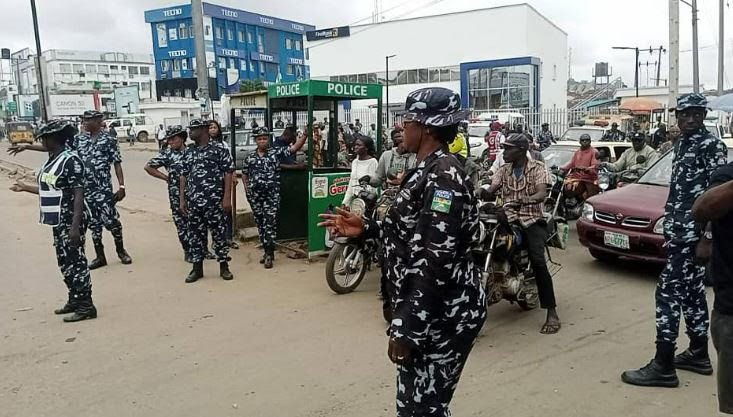On Tuesday morning, Port Harcourt witnessed a significant demonstration of youth opposition to the planned October 1 protest. By 10 am, hundreds of young individuals had gathered in key locations, notably near the Federal Secretariat and Pleasure Park, two iconic venues that served as the central hubs for the #EndBadGovernanceProtest in August. The earlier protest had lasted for ten days, drawing attention to systemic governance issues, but today’s gathering carried a starkly different message.
The surge in youth opposition came as a response to the upcoming October 1 protest, an event set to draw attention to various grievances regarding governance in Nigeria. By mid-morning, the number of opposing youths had swelled to over 200, effectively occupying strategic areas between the Federal Secretariat and Hotel Presidential along the busy Aba Road. This convergence highlighted the polarization surrounding national protests and the deeply rooted division among Nigerian youths when it comes to governance issues and modes of dissent.
The crowd, although peaceful, was a strong representation of those who are either disillusioned with protests or have differing viewpoints on how political change in Nigeria should be achieved. Many of these youths view protests such as October 1 and #EndBadGovernance protests as either unnecessary disruptions or ineffective methods of instituting change. Their gathering seemed to be an expression of frustration, not just with the government, but also with the cyclical nature of protests that, in their view, fail to deliver tangible results.
To maintain order and ensure the situation did not escalate into chaos, the Nigerian security forces were quick to deploy a formidable presence. Five police patrols were observed in the area, and they were not alone. Armed policemen, soldiers, and operatives from the Department of State Services (DSS) were stationed at strategic points to prevent any potential unrest. This multi-agency security arrangement underscored the government’s determination to avoid a repeat of the protests in August, which had left a deep mark on Port Harcourt’s social and political landscape.
The presence of security forces, while necessary to maintain order, also raises questions about the militarization of civil spaces during protests. The use of armed personnel to manage dissenting voices creates an atmosphere of intimidation and raises concerns about the right to peaceful assembly. It also sparks a larger debate on how the government balances the protection of public order with citizens’ constitutional rights to express their discontent.
As the situation unfolded, it became clear that this gathering of anti-protest youths had more significant implications. It was not just a protest against a protest, but a reflection of the broader divisions in Nigerian society. For every youth willing to take to the streets and demand change, there are others who remain skeptical or opposed to such methods. The #October1 protest opposition in Port Harcourt is a reminder of the complex social and political fabric of Nigeria, where consensus on the path to progress is still elusive.
The question remains: how can these divergent voices be reconciled? While one group demands immediate action through protests, another calls for more patience or different approaches. As Nigeria continues to grapple with governance challenges, the role of youth in shaping the future will be critical. What is essential now is finding a way to engage all voices in a meaningful dialogue, ensuring that both the frustrations of protestors and the concerns of their opponents are addressed in a manner that fosters unity rather than deepening divisions.
The events of Tuesday in Port Harcourt present a microcosm of the larger national debate on governance, dissent, and youth engagement. As the #October1 protest approaches, it is clear that the road ahead for Nigeria is fraught with challenges, but with the potential for transformative change if all sides can find a common ground.





